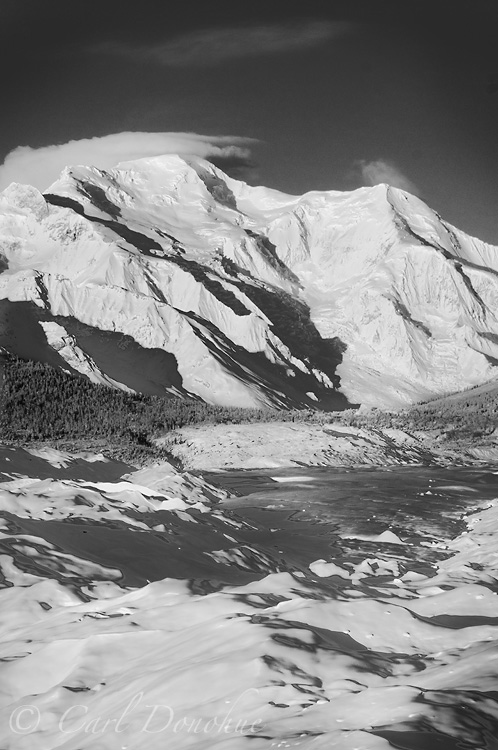I don’t know quite what the temperature was this particular morning but I do know it was cold. Really cold. By the time I made it back to the cabin my nose was covered in a thin film of ice, and my fingertips hurt like someone had parked a truck on top of them. My camera didn’t work. The LCD on the back was frozen. LCD stands for Liquid Crystal Display, of course, and at minus 40, “liquid” is hard to come by.
But the camera had functioned well enough, for long enough, that I managed to make a few images this morning. Once back at the shack, a warmed things up with a roaring fire, plugged the camera battery into the charger into the inverter into a 12v deep-cycle battery, and let the heat do its business on those tiny little electrons.
The next morning, the same thing again, and the following morning as well. The following afternoon a thin layer of low cloud rolled in, and by the following morning, the temperatures had risen by a solid 60 degrees, and rose yet 20 degrees more during the 24 hours. The temperature, in a space f 48 hours, went from nearly minus 40 degrees (F or C, as both scales are the same at -40) to not quite 40 above.
My camera enjoyed the respite, but I wasn’t quite such a happy camper. keeping food frozen, especially bags of mixed vegetables, frozen is much easier at minus 40 than it is at +40. it took some finagling and reorganizing, but everything worked out OK. As things generally seem to, someway or another.
For those folks who are familiar with Kennicott/McCarthy in the summer, all I can tell you is do yourself a favor and visit during the winter. Just once. It’s a powerful presence here, the light, the cold, the stillness, the silence. Everything comes together in a compelling, almost overwhelming experience.
A black and white Mt. Blackburn photo, in winter, across the Root Glacier and Donoho Basin, Wrangell-St. Elias National Park and Preserve, Alaska.
